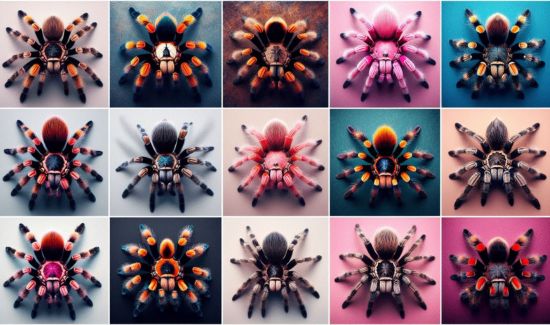Introduction
Table of Contents
Are you fascinated by spiders and considering a tarantula to buy? You’re not alone! Tarantulas have become increasingly popular as exotic pets in the USA. These large, hairy spiders might seem intimidating, but they are often gentle and easy to care for. However, choosing the right tarantula to buy can be tricky, especially with so many species available.
In this article, we’ll provide everything you need to know before purchasing a tarantula. Whether you’re a beginner or an experienced spider enthusiast, this guide will help you make an informed decision. We’ll cover the best species for beginners, what to look for in a healthy tarantula, and how to set up the perfect habitat. Additionally, we’ll discuss the costs involved, legal considerations, and what to expect when caring for these fascinating creatures.

Table of Information: Tarantula To Buy
| Topic | Details |
|---|---|
| Best Beginner Tarantula Species | Chilean Rose, Mexican Red Knee, and Curly Hair Tarantula |
| Average Lifespan | Females: 10-30 years, Males: 5-10 years |
| Initial Setup Cost | $100-$300 (including the tarantula, enclosure, and basic supplies) |
| Ongoing Care Costs | $10-$20 per month (for food and maintenance) |
| Legal Considerations in the USA | Check state and local regulations on owning exotic pets |
| Common Health Issues | Mites, dehydration, and molting problems |
| Temperament | Generally calm but varies by species |
| Feeding Frequency | Juveniles: every 2-3 days, Adults: every 1-2 weeks |
| Recommended Habitat Size | 5-10 gallon enclosure with proper ventilation |
Why Choose a Tarantula as a Pet?
Tarantulas are not your typical household pets, but they have a unique appeal. For many, the idea of owning a tarantula is a way to experience something truly different. Here are some reasons why tarantulas make great pets:
- Low Maintenance: Unlike cats or dogs, tarantulas require minimal care. They don’t need daily walks, grooming, or much attention.
- Space-Efficient: Tarantulas don’t need a lot of space. A small tank is usually enough to keep them happy.
- Fascinating to Observe: Watching a tarantula spin its web, hunt, or molt can be a mesmerizing experience.
Things to Consider Before Buying a Tarantula
Before you rush out to buy a tarantula, there are a few important things to consider.
- Species Selection:
- Not all tarantula species are suitable for beginners. Some can be more aggressive or difficult to care for. If you’re new to tarantula keeping, consider starting with a Chilean Rose Tarantula or Mexican Red Knee Tarantula. These species are known for their docile nature and are easier to handle.
- Housing Requirements:
- Tarantulas need a proper enclosure that mimics their natural habitat. This includes the right temperature, humidity, and hiding spots. A typical setup includes a 5-10 gallon tank, a water dish, and substrate (such as coconut fiber or peat moss) for burrowing.
- Feeding and Care:
- Tarantulas primarily eat insects like crickets, mealworms, and roaches. Feeding them is relatively easy, but you should ensure their food is appropriately sized (no larger than the tarantula’s abdomen). Overfeeding or underfeeding can lead to health issues, so it’s important to get the balance right.
- Handling and Safety:
- While some tarantulas are calm and can be handled, others might be more defensive. Always research the temperament of the species you’re interested in. Even though tarantulas are not dangerous to humans, their bite can be painful, and their urticating hairs can cause irritation.
- Legal Considerations:
- Before buying a tarantula, check your local laws and regulations regarding the ownership of exotic pets. Some states or cities in the USA may have restrictions on keeping certain species.
Top 5 Tarantula to Buy
If you’re ready tarantula to buy, here are five popular species to consider:
1. Chilean Rose Tarantula
- Scientific Name: Grammostola rosea
- Pros: Docile, easy to care for, long lifespan
- Cons: Can be unpredictable during molting
2. Mexican Red Knee Tarantula
- Scientific Name: Brachypelma hamorii
- Pros: Attractive appearance, calm demeanor
- Cons: Slightly more expensive
3. Curly Hair Tarantula
- Scientific Name: Tliltocatl albopilosum
- Pros: Hardy and forgiving for beginners
- Cons: Less vibrant in color
4. Green Bottle Blue Tarantula
- Scientific Name: Chromatopelma cyaneopubescens
- Pros: Stunning colors, active webbers
- Cons: Slightly more defensive
5. Pink Toe Tarantula
- Scientific Name: Avicularia avicularia
- Pros: Arboreal, fascinating to watch climb
- Cons: Requires more specific humidity levels
Setting Up the Perfect Tarantula Habitat
Creating a comfortable and safe environment for your tarantula is essential. Here’s a step-by-step guide:
- Enclosure: Start with a 5-10 gallon tank with a secure lid to prevent escapes. Ensure the enclosure has good ventilation.
- Substrate: Use coconut fiber, peat moss, or vermiculite as a substrate. This helps maintain humidity and allows your tarantula to burrow if needed.
- Hiding Spot: Provide a hideout like a small cave or a piece of bark where your tarantula can retreat.
- Water Dish: A shallow water dish should be available at all times. Make sure it’s cleaned regularly to avoid mold.
- Temperature and Humidity: Most tarantulas thrive at temperatures between 70-85°F with humidity levels depending on the species. A small heat mat or lamp can help regulate temperature.
Feeding Your Tarantula
Feeding your tarantula is straightforward, but it’s important to understand their dietary needs:
- Juveniles should be fed every 2-3 days with small insects.
- Adults can be fed every 1-2 weeks with larger prey like crickets or roaches.
- Always remove uneaten food after 24 hours to prevent it from stressing your tarantula or attracting mites.
Caring for Your Tarantula
Tarantulas are relatively low-maintenance pets, but there are a few key things to keep in mind:
- Molting: Tarantulas shed their exoskeletons as they grow, which can be a stressful time for them. Ensure they have a humid environment during this period and avoid handling them.
- Health Issues: Common problems include dehydration and mites. Regularly check your tarantula for signs of illness, such as lethargy or refusal to eat.
- Handling: If you choose to handle your tarantula, do so gently and avoid sudden movements. Some species are more tolerant of handling than others, so always do your research.
Costs of Owning a Tarantula
Owning a tarantula can be a cost-effective pet option, but there are still expenses to consider:
- Initial Purchase: A tarantula can cost anywhere from $20 to $200, depending on the species.
- Enclosure and Setup: Expect to spend between $100 and $300 on the enclosure, substrate, heating elements, and other necessities.
- Ongoing Costs: Monthly expenses for food and maintenance usually range from $10 to $20.
Legal and Ethical Considerations
Before you buy a tarantula, it’s essential to understand the legal and ethical implications. Some states and local governments in the USA have restrictions on keeping exotic pets. Always check with your local authorities to ensure you’re complying with the law.
Additionally, consider the ethical aspects of owning a tarantula. Make sure you’re purchasing from a reputable breeder or pet store that practices ethical breeding and does not contribute to the illegal wildlife trade.
Conclusion
Tarantulas can be fascinating, low-maintenance pets that offer a unique experience for those interested in exotic animals. However, it’s essential to choose the right species and provide the proper care to ensure your tarantula thrives. By following the guidelines in this article, you’ll be well-prepared to make an informed decision when selecting the perfect tarantula to buy.
FAQs About Tarantula To Buy
1. What is the best tarantula for beginners?
The Chilean Rose Tarantula and Mexican Red Knee Tarantula are both excellent choices for beginners due to their calm demeanor and easy care requirements.
2. How long do tarantulas live?
Females can live between 10-30 years, while males typically live 5-10 years.
3. How often should I feed my tarantula?
Juveniles should be fed every 2-3 days, while adults can be fed every 1-2 weeks.
4. Do tarantulas need a heat source?
Most tarantulas do well at room temperature, but a small heat mat or lamp may be necessary in colder climates.
5. Is it legal to own a tarantula in the USA?
Laws vary by state and city, so it’s important to check local regulations before purchasing a tarantula.

